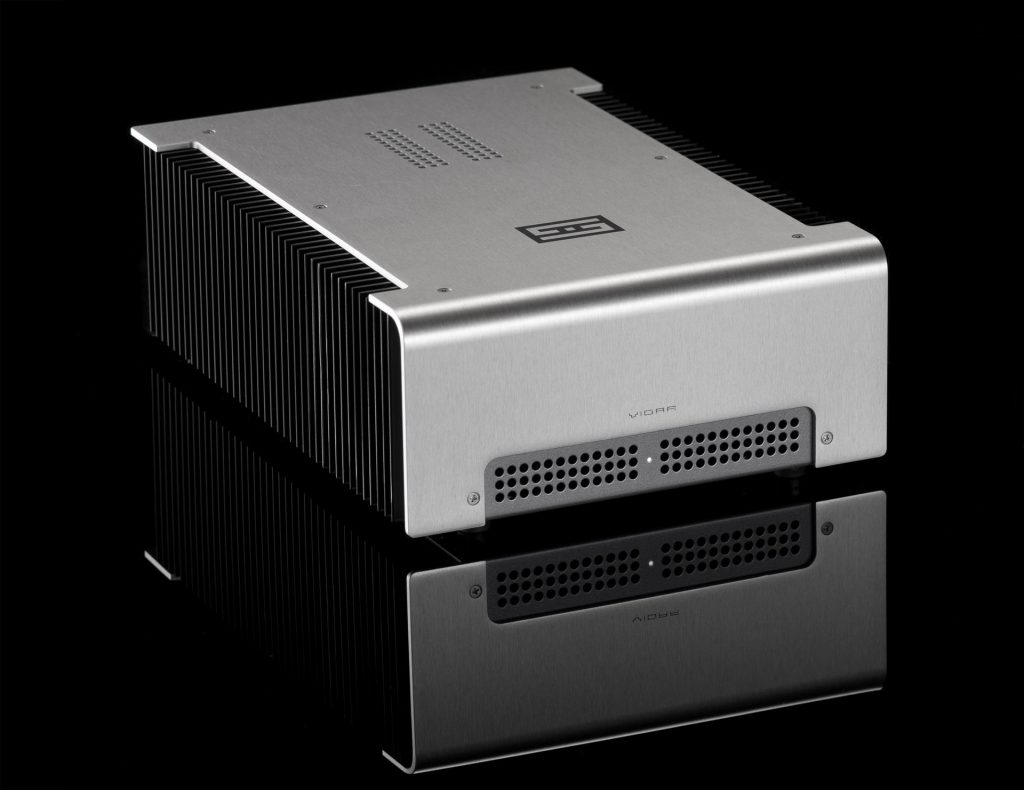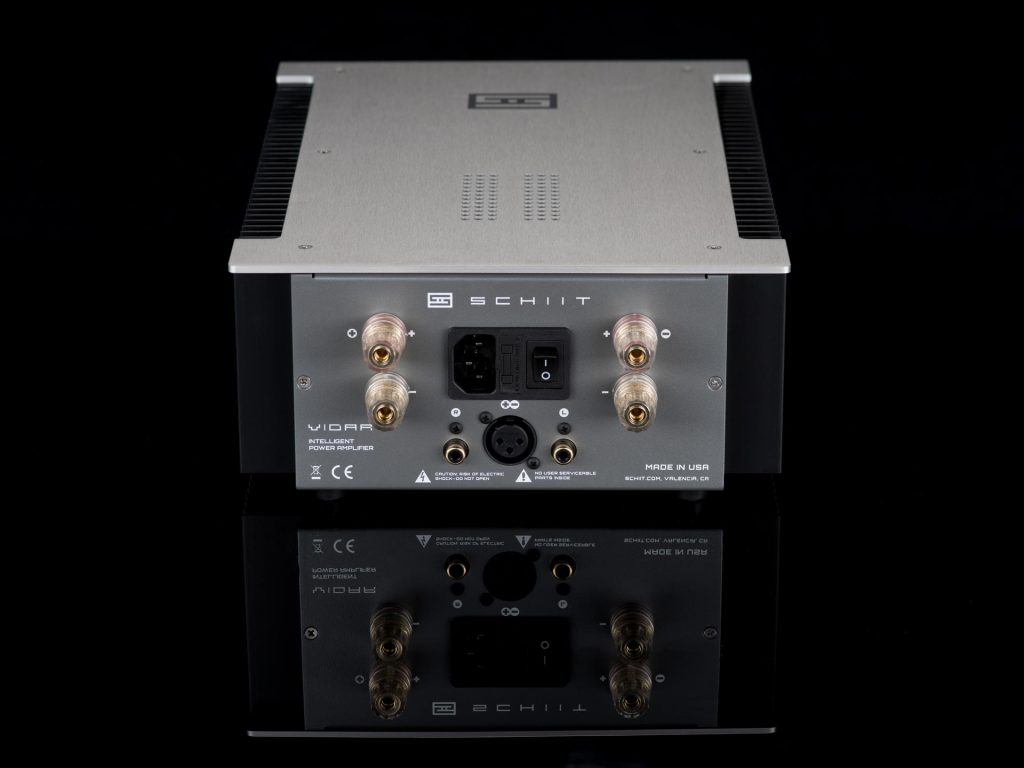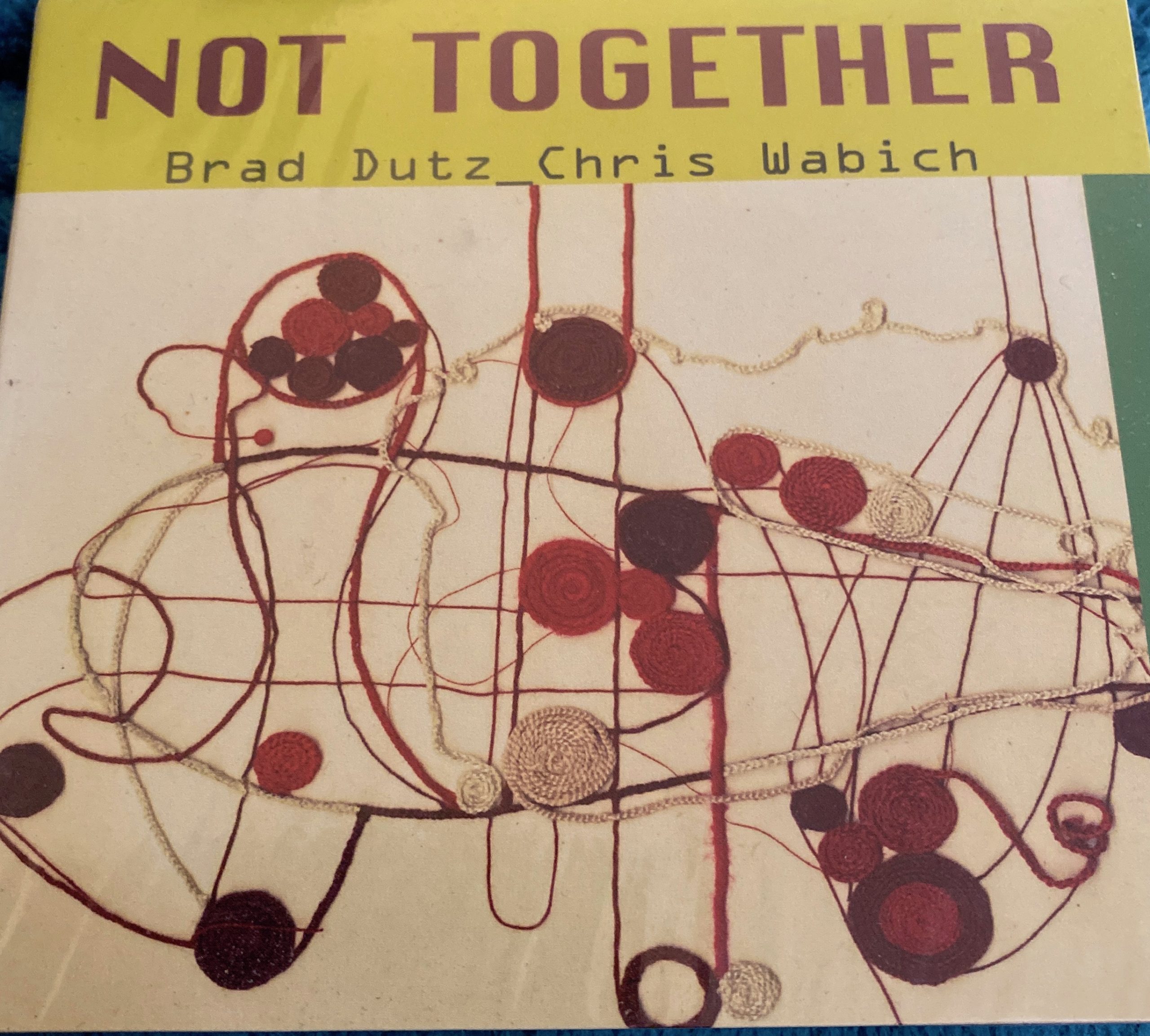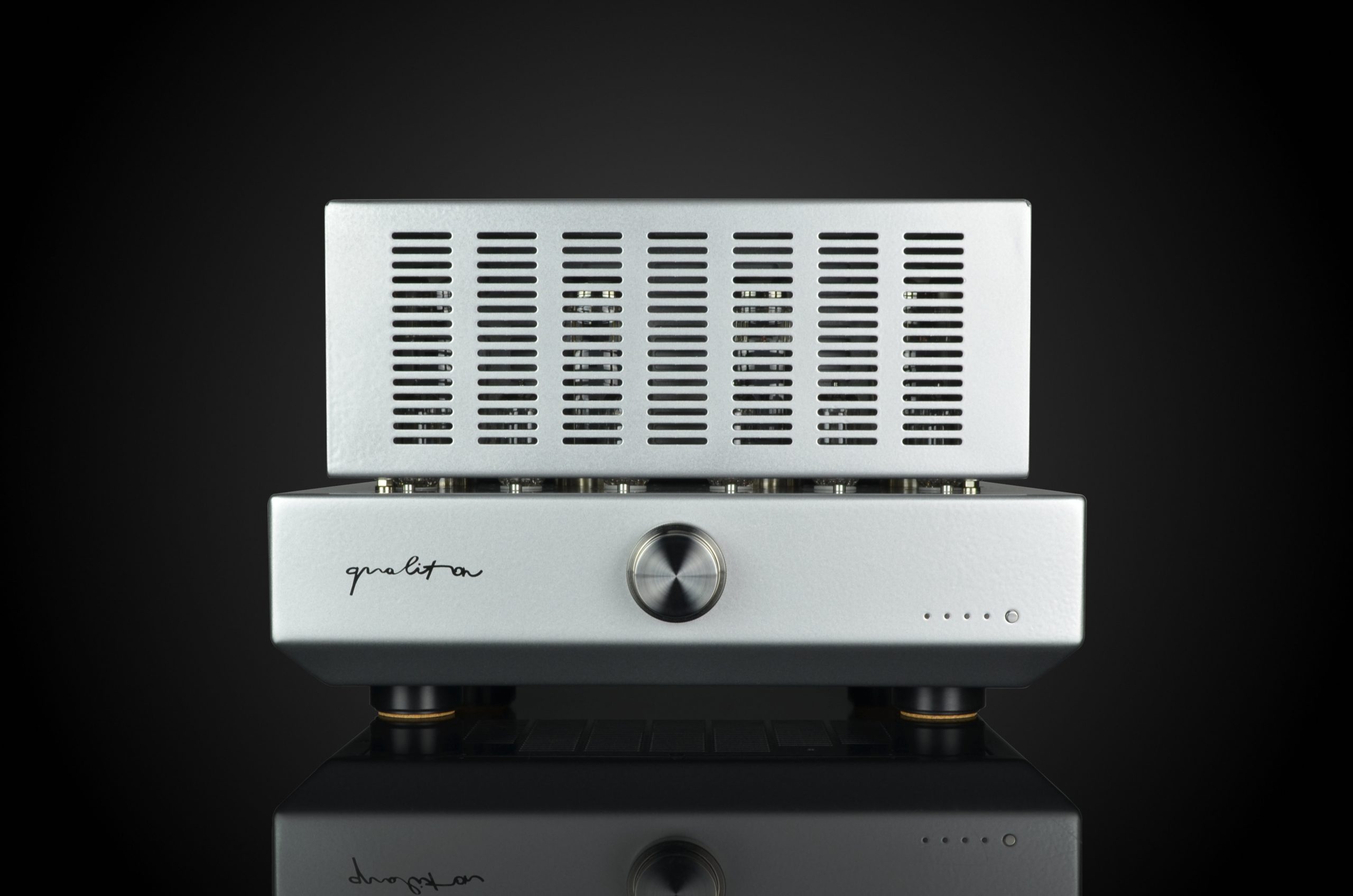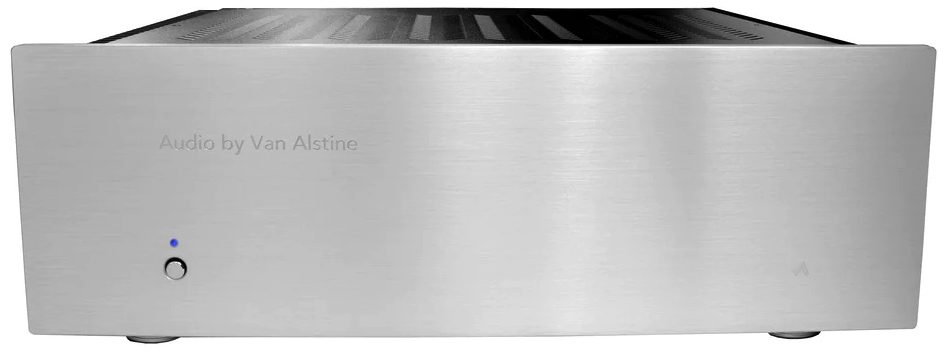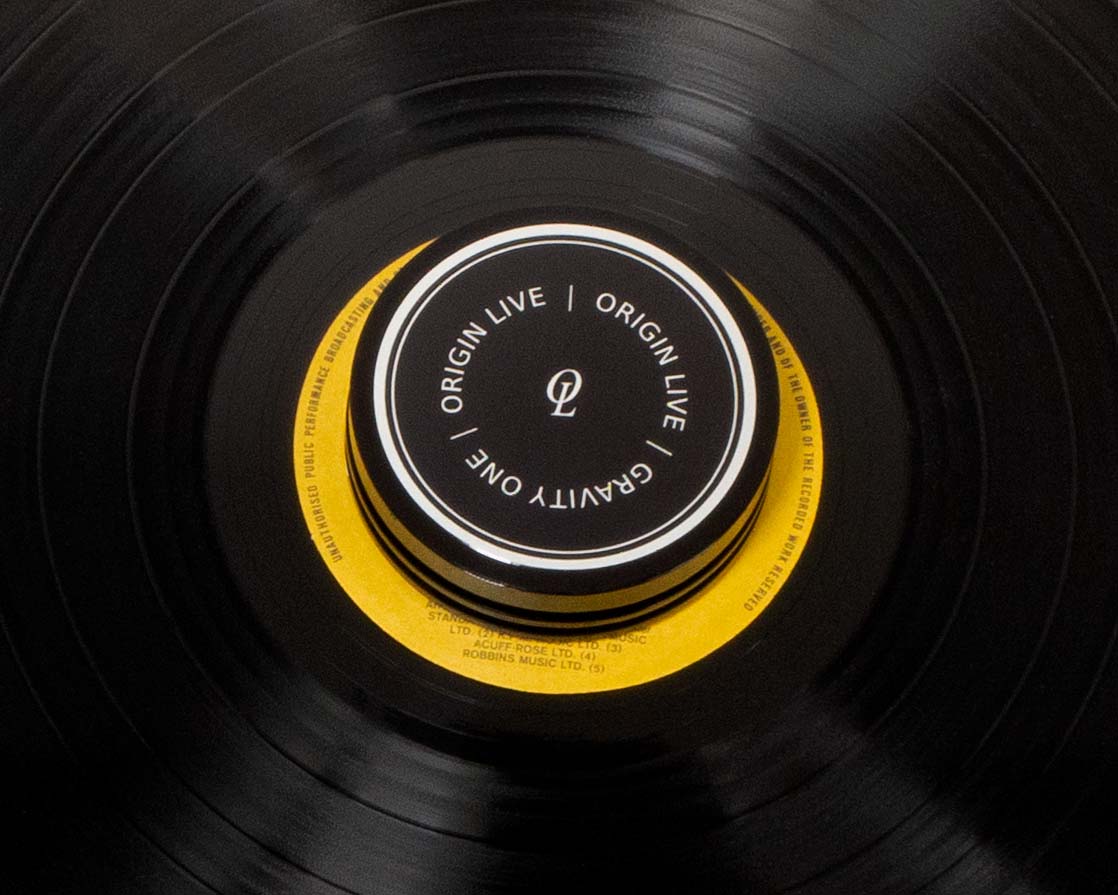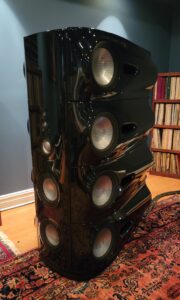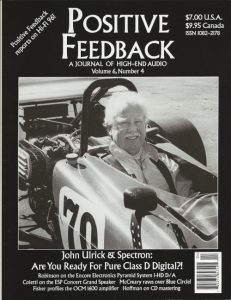Dean Seislove mentioned he had Schiit's Vidar amplifier in house. You can read that review HERE. I'd just been listening to Schiit's Gungnir Multi-Bit (Schiit refers to in in-house as "Gumby") and was really pleased with the experience, so I asked to hear it before it went back.
Schiit's Vidar is a small amplifier, weighing a mere 10kg though delivering 100 watts at 8 Ohms and 200 watts at 4 Ohms. It runs very warm but not quite hot, which made me think it was a "class A" operation amplifier. It is not, but it sounds rich and sweet like amplifiers that operate in class A, meaning the transistor is always "on." Its footprint is much smaller than the industry norm (17" wide, etc.) with a concomitant reduction in the amount of heat sinking, or so it appears to me. For more technical details go to www.schiit.com for more information.
With powered reference speakers I could not insert the Vidar into my true reference system. Instead, I hauled out the overachieving Pioneer SP-BS22 LR Speakers ($129 when new) with a 6 Ohm load. The signal was from the variable output of my Oppo BD105 ($1299 when new) using Kubala-Sosna Fascination interconnects and Romex speaker cables. Pretty mundane you'd think. Pretty good was more like it.
The above-referenced setup was delightful. From a footprint standpoint, it's a winner. There is a low chassis count (two for electronics and two for speakers), small footprint and with a relatively affordable $2300 price tag for the bunch. One could also start off with a less costly digital setup; including a used BDP-105 for around $500 which gets you closer to $1500. In this instance, low cost and small footprint are cherries on top.
Tone, timbre, and image specificity were remarkably good. The speakers disappeared as the source of music. Although they don't dig as deep and are not as dynamic as my speakers ($8300 when new), they dug deep enough to make me happy. This combination had a net big enough to capture much of what my system does, albeit without the same depth, dynamics, and image specificity. For those thinking they're not ready to wear the audiophile hat and pay the audiophile price, this is a great place to start.
The Oppo, when paired with a lesser amplifier (Denon receiver) and the same Pioneers, were inoffensive but also far less interesting, less detailed with a less clear and exact rendering of tone and timbre. The Vidar has that lovely balance of detail and sweetness that live music has usually costing part of one arm to own. In fact, probably because the Pioneers have a slight BBC midrange dip, they're less forward sounding than my reference speakers, which makes them sound more inviting than incisive.
Unbeknownst to my wife, I'd inserted the Pioneers and the Vidar into our living room. While she was reading and eating a snack well off-axis from the speakers I asked her to close her eyes, without telling her the reason. Eyes closed I asked her how our system sounded. She remarked it sounded quite good, sweet, engaging, and a pleasure—she's been around too long not to have picked up some jargon. I revealed the reasoning for my question and she was nearly effusive.
Yes, for a moment, I thought I could sell off my expensive reference system and run away with a few dollars and live a simple life. And, no, I would not do that. At least not with the Pioneers. But, for $699 for the Vidar, $129 for the Pioneers (plus stands), and a source, the sound was exceptional. The Vidar is like being around smart people—it's easier to make points, be understood, and have engaging conversations that leave one delighted. And, it's also able to distinguish lesser from better.
Listening to Eddie Higgins with Scott Hamilton "It's Magic" was a delight, if a little sleepy and perhaps too relaxed, but that's the music. My 13 year old son, unaware of the music being played, precociously said he didn't like the music because it was so sad, "it sounds like music you play when you break up." As far as I know he's never had a girlfriend, let alone broken up with one, but he hit a bullseye in characterizing the music.
Playing the same track using Oppo's UDP-203 ($549) with a lesser output section, Higgins' piano sounded more like a toy—with the attack simply less intimately connected to the sustain. Hamilton's sax fared better than the piano, but all in all it was just less engaging—a good sign of useful transparency. Was it bad? Hardly, it's just that the twice as expensive Oppo did yield an increase in touch, tone and timbre.
This was not supposed to be a review, I had permission to just listen and return the Vidar. However, I felt like I should spill some ink on a wonderful amp that plays so well. Its performance is even better than the asking price. Recommended? Oh, yes!
Schiit Vidar Intelligent Stereo/Mono Power Amplifier
Retail: $699 each
Schiit Audio




